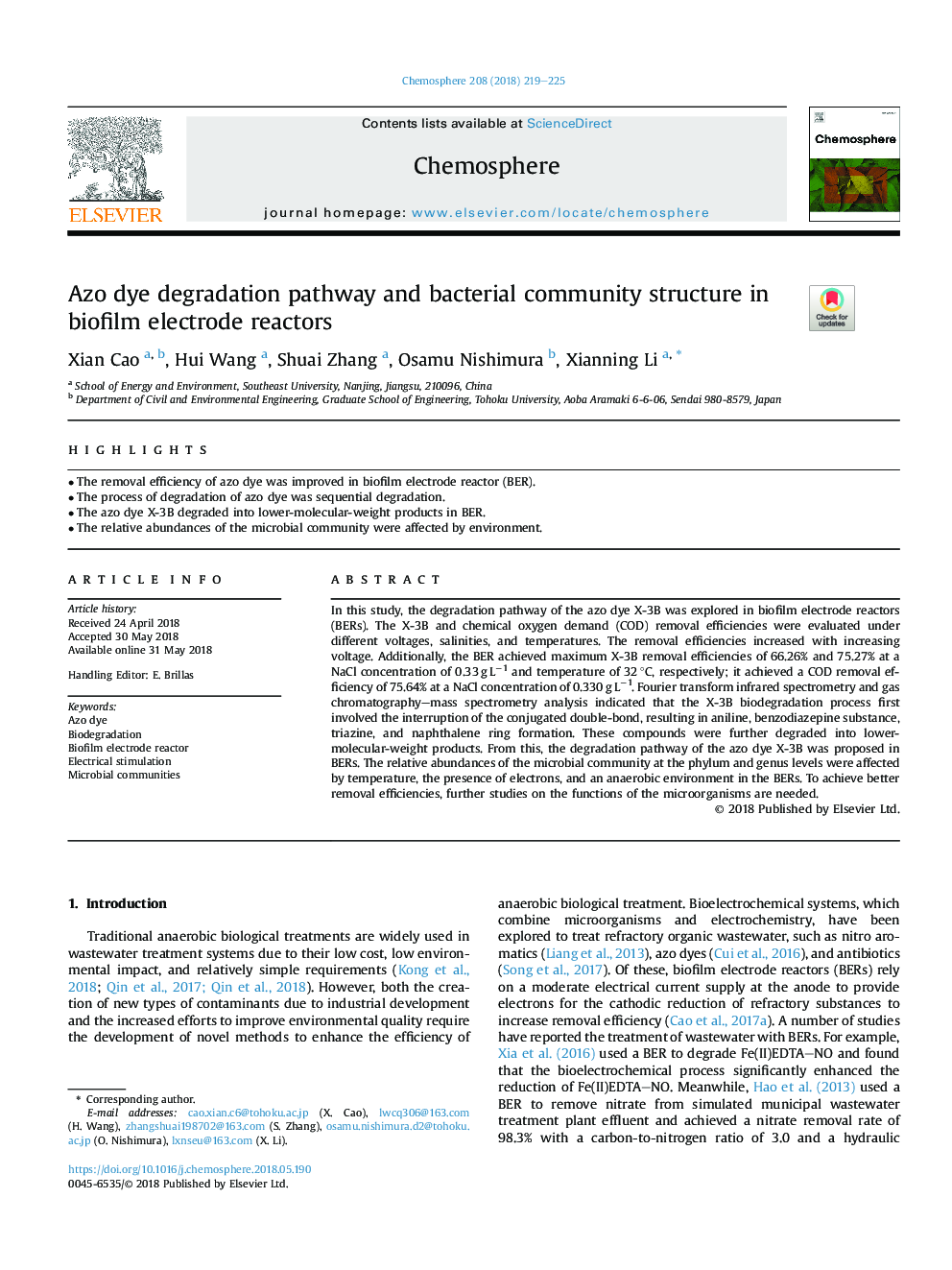| کد مقاله | کد نشریه | سال انتشار | مقاله انگلیسی | نسخه تمام متن |
|---|---|---|---|---|
| 8850671 | 1618763 | 2018 | 7 صفحه PDF | دانلود رایگان |
عنوان انگلیسی مقاله ISI
Azo dye degradation pathway and bacterial community structure in biofilm electrode reactors
ترجمه فارسی عنوان
مسیر تخریب رنگ آزو و ساختار جامعه باکتری در راکتورهای الکترودهای بیوفیلم
دانلود مقاله + سفارش ترجمه
دانلود مقاله ISI انگلیسی
رایگان برای ایرانیان
کلمات کلیدی
موضوعات مرتبط
علوم زیستی و بیوفناوری
علوم محیط زیست
شیمی زیست محیطی
چکیده انگلیسی
In this study, the degradation pathway of the azo dye X-3B was explored in biofilm electrode reactors (BERs). The X-3B and chemical oxygen demand (COD) removal efficiencies were evaluated under different voltages, salinities, and temperatures. The removal efficiencies increased with increasing voltage. Additionally, the BER achieved maximum X-3B removal efficiencies of 66.26% and 75.27% at a NaCl concentration of 0.33â¯gâ¯Lâ1 and temperature of 32â¯Â°C, respectively; it achieved a COD removal efficiency of 75.64% at a NaCl concentration of 0.330â¯gâ¯Lâ1. Fourier transform infrared spectrometry and gas chromatography-mass spectrometry analysis indicated that the X-3B biodegradation process first involved the interruption of the conjugated double-bond, resulting in aniline, benzodiazepine substance, triazine, and naphthalene ring formation. These compounds were further degraded into lower-molecular-weight products. From this, the degradation pathway of the azo dye X-3B was proposed in BERs. The relative abundances of the microbial community at the phylum and genus levels were affected by temperature, the presence of electrons, and an anaerobic environment in the BERs. To achieve better removal efficiencies, further studies on the functions of the microorganisms are needed.
ناشر
Database: Elsevier - ScienceDirect (ساینس دایرکت)
Journal: Chemosphere - Volume 208, October 2018, Pages 219-225
Journal: Chemosphere - Volume 208, October 2018, Pages 219-225
نویسندگان
Xian Cao, Hui Wang, Shuai Zhang, Osamu Nishimura, Xianning Li,
